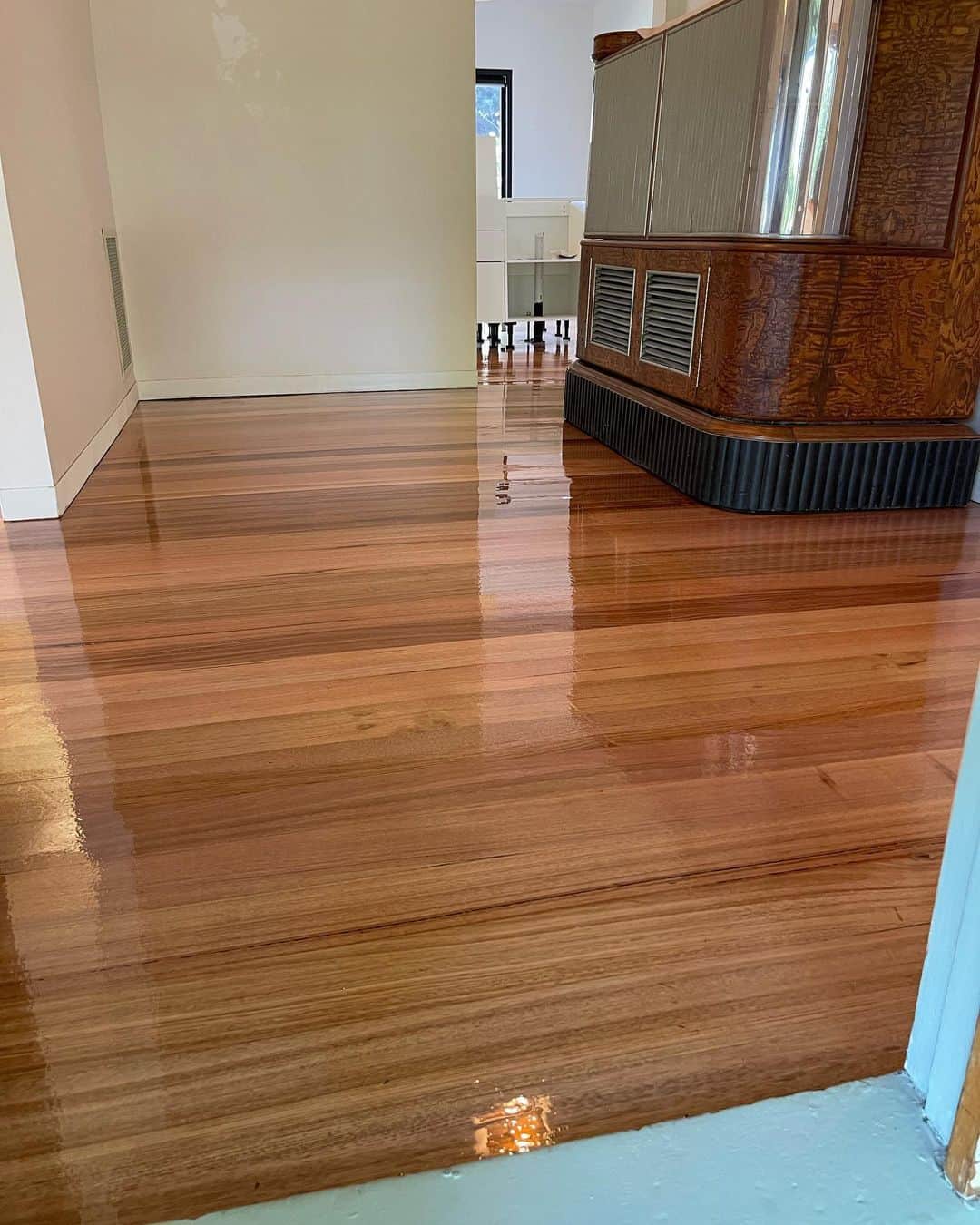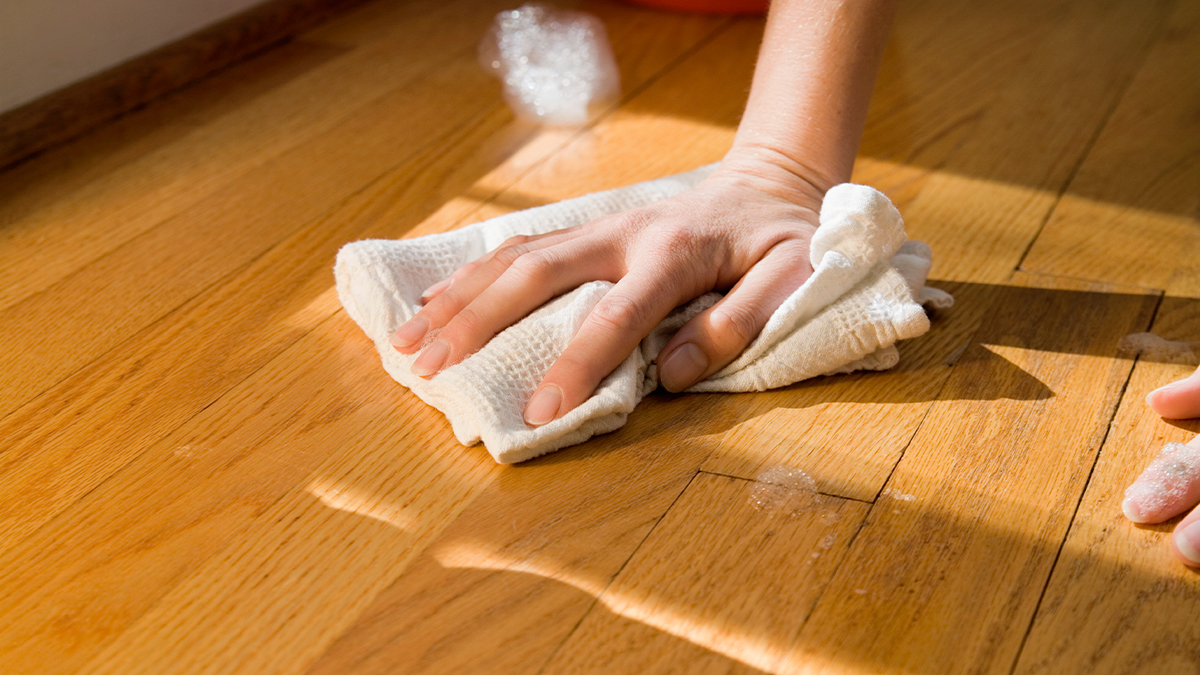The warmth and natural beauty of wooden floors are undeniable. But keeping them clean can feel like a delicate balancing act. Many people wonder, “Can I really just use water on my wooden floor?” The answer isn’t as simple as a yes or no. It depends on the type of wood, the finish, and, most importantly, the level of moisture present.

Image: www.whatisvinyl.com
I remember the day I moved into my new apartment. My beautiful hardwood floors were a major selling point. I was eager to tackle the cleaning, but my enthusiasm quickly turned into anxiety when I realized water might be a bad idea. My research, however, led me to a surprising discovery: with the right approach, water can be part of a safe and effective cleaning routine.
Understanding the Risks of Water on Wooden Floors
The heart of the matter lies in the potential for water damage. Wooden floors are susceptible to warping, swelling, and even rotting if they absorb too much moisture. This is especially true for unfinished woods and those with certain types of finishes. Imagine a sponge, soaking up water and growing bigger; this is what can happen to wood. The extent of the damage depends on the severity of the exposure and the type of wood. For instance, woods like oak and maple tend to be more durable than pine or softwoods.
The finish on your floor plays a significant role as well. Finishes like polyurethane are designed to create a barrier against water and moisture. However, aged or damaged finishes can let water seep through, potentially compromising the underlying wood. It’s essential to be mindful of the finish’s condition. If you’re uncertain, it’s best to err on the side of caution and consult a professional.
Safe Cleaning Practices for Wooden Floors
With an understanding of the potential risks, you can confidently approach cleaning your wooden floors. Remember, moderation is key. The goal is to use enough water to clean effectively without saturating the wood. Following these steps can ensure the longevity and beauty of your floors:
1. Choose the Right Cleaning Products:
Avoid harsh chemicals and abrasive cleaners. They can strip away the protective finish and leave your floors looking dull. Look for pH-neutral cleaners specifically designed for wood floors or opt for a DIY solution of mild dish soap and warm water.

Image: www.firstforwomen.com
2. Dampen, Don’t Drench:
Wring out your mop or cloth thoroughly before cleaning. You want a damp cleaning surface, not a wet one. Excess water can seep into the wood and cause problems. Consider microfiber mops, which absorb moisture effectively.
3. Clean in Small Sections:
Work in small sections to ensure that each area is dried thoroughly before moving on. This prevents the accumulation of excess moisture. You can also opt for a spray bottle and a soft cloth to control the amount of water used.
4. Dry Immediately:
After cleaning each section, immediately dry the floor with a clean, dry cloth or towel. This will remove any residual moisture and prevent it from seeping into the wood. You can also consider using a fan to accelerate the drying process.
5. Avoid Standing Water:
No matter the type of wood or finish, standing water on your floors is a recipe for disaster. Wipe up spills immediately and avoid using a soaking wet mop or sponge.
Expert Tips for Maintaining Your Wooden Floors
Beyond routine cleaning, there are additional simple practices to enhance the longevity of your wooden floors and keep them looking their best:
1. Regular Maintenance:
Cleaning your wooden floor regularly can help prevent dirt and grime from building up, making it easier to clean and preserving the finish.
2. Use Floor Mats:
Placing mats at entry points can trap dirt, dust, and debris before it gets tracked onto your floors. This reduces the need for frequent cleaning and protects your floor from scratches.
3. Protect the Finish:
Consider adding a sealant to your existing finish to provide an extra layer of protection against moisture and spills. Periodically refinishing your floors can restore their shine and protect them from wear and tear.
4. Avoid Direct Sunlight:
Prolonged exposure to direct sunlight can cause the wood to fade and become discolored. Use curtains or blinds to minimize the amount of direct sunlight that reaches your floors.
FAQs:
Q: Can I use steam cleaning on wooden floors?
A: Generally, it’s not recommended due to the high temperature and moisture levels. However, certain manufacturers and types of wood may be compatible with steam cleaning. Consult your floor manufacturer or a professional for guidance.
Q: Can I clean wooden floors with vinegar?
A: Diluted white vinegar can be a safe and effective cleaner for wooden floors. It helps to disinfect and remove dirt while being gentle on the wood.
Q: Can I use a vacuum cleaner on wooden floors?
A: Yes, a vacuum cleaner is great for dust and debris. Be sure your vacuum cleaner has a brush attachment and use it on a low setting to avoid scratching the wood.
Can We Clean Wooden Floor With Water
Conclusion:
While “Can I clean my wooden floor with water?” requires careful consideration, with the right knowledge and cautious approach, it can be part of your cleaning routine. Remember to always choose gentle cleaners, use water sparingly, and dry your floor thoroughly.
Are your wooden floors a source of pride in your home? Tell us about your cleaning routines and what works best for you in the comments below! We’d love to hear form you.



/GettyImages-173599369-58ad68f83df78c345b829dfc.jpg?w=740&resize=740,414&ssl=1)


